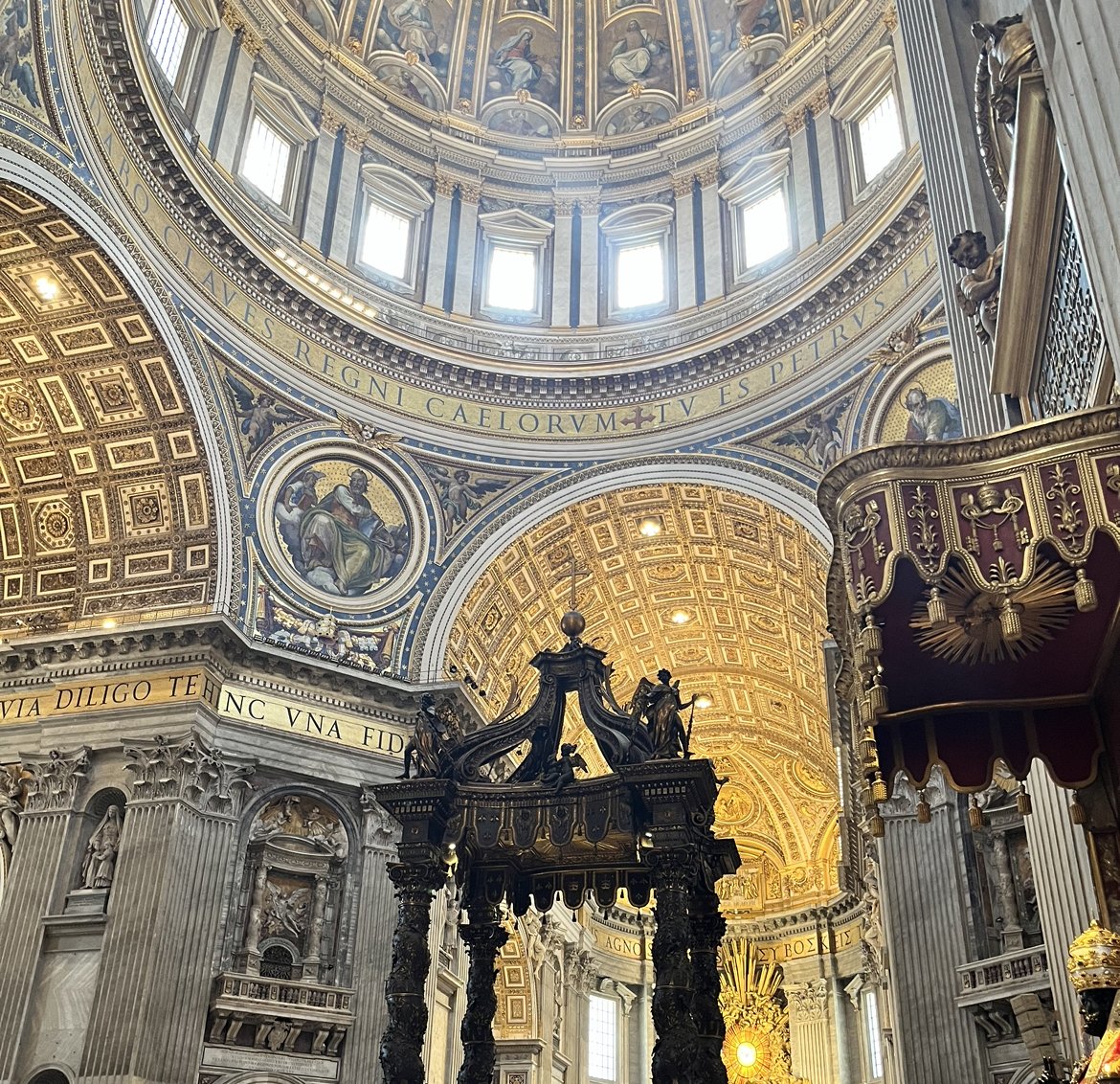Service and Patronage
In 1505, the great Renaissance artist Michelangelo received a commission from Pope Julius II for a massive tomb that would include forty separate figures. The tomb was completed in 1545 at a scale that was one-third the size of the original. Julius II was not interred in the tomb.
In 2023, a group of 33 students was notified they had been accepted to a service learning program in Arezzo, Italy, where they would be tasked with refurbishing a community park. They happily finished the project in five days.
During the Renaissance, art was frequently a direct product of patronage. Great artists were creating because people or institutions, primarily the Church, compensated them for it. In the case of Michelangelo, creating was often a burden. Michelangelo was, first and foremost, a sculptor. He was also a scientist, having studied human anatomy, which is ubiquitous in his work, from the veins of David to the movement of Moses. Michelangelo then was an architect as well, designing the dome of St. Peter’s Basilica. When he was offered the Sistine Chapel to paint in 1508, he initially refused on the grounds that he, first, was not a painter and, second, did not desire to take on a project of that caliber. At the time, he was hard at work on the tomb of Julius II and refused to take on another commission from the Warrior Pope.
As we all know, Michelangelo did eventually create the frescos decorating the walls and ceiling of the Sistine Chapel, the place that still serves as the private chapel of the Pope. However, it may come as a surprise that the Universal Genius was more or less forced to do this. From his correspondence with his family from 1508 to 1512, it is understood that the years he spent on this project were some of the most trying times of his life. For Michelangelo, his talents and these creations were merely burdens.
I cannot help but wonder if this impacts the true value of the work. In this sense, value would not refer to monetary worth, but rather the value of a work as a portal into some aspect of broader humanity, such as lifeways of the past, or an individual’s humanity, such as the artist’s personal worldview.
I can say with certainty that seeing the frescos of the Sistine Chapel was no less breathtaking knowing the artist’s attitude toward the space. I stared up at the ceiling, overwhelmed by stories and colors, by the room's grandeur. I searched for what I knew I could easily identify: The Creation Of Adam. This was my second time in the Sistine Chapel in three weeks. The first time, I had been told that the space between the hand of God and the hand of man was not in the original design, but Michelangelo decided during the process of painting it to separate Adam and God, symbolizing free will and the responsibility of man to reach out to God. The second time, I was told that the space illustrated the inability of man to understand God or achieve godliness; in other words, God was “untouchable.” It seems that even when an artist creates unenthusiastically, they still leave pieces of themselves behind.
Of course, the reason for creating art has shifted over the years. Ancient Roman and Greek artists were thought of as craftsmen, their works showing that form followed function. Then, during medieval times, patrons began commissioning works. The Renaissance saw the rise of naturalism and individualism and the Lutheran Reformation gave way for art as a medium for social and political critique. Now, many artists are activists. They address issues and inspire change. They serve the greater good by starting and contributing to difficult conversations, their works becoming a voice for those who need it. Art is service.
I was lucky to be one of those 33 students who got to participate in the transformation of that park in Arezzo. We had the opportunity to use creative techniques to serve a cause that was bigger than us. Unlike Michelangelo, we were not tortured artists. We were not divinely inspired geniuses. Our work was not labor intensive and we were not paid millions of dollars to complete our project. Like Michelangelo, however, we left pieces of ourselves in that park.
If there is one thing I have learned during my time in Italy, it is that art holds meaning. Art is the expression of thoughts and ideas. Art is humanity and the way we cope with the world. Tangible, visual, or physical works of art are the only instances of material holding inherent value. How much value? That’s up to us.



